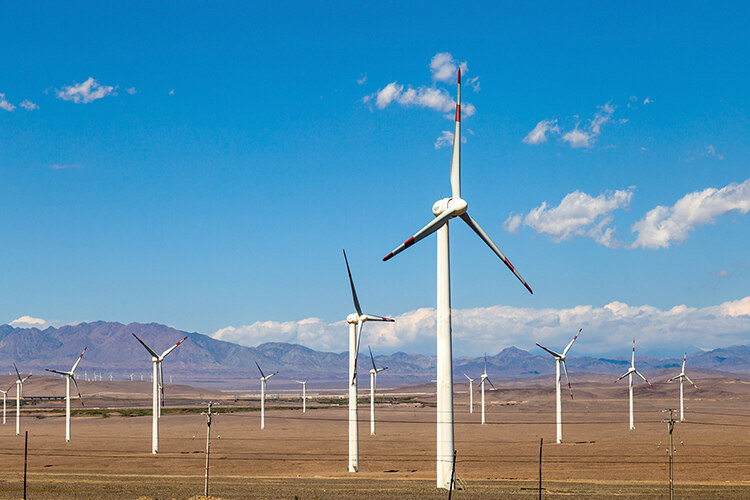


Marco Magrini points out that climate technology is racing ahead of climate politics in finding much-needed solutions
Imagine an alien spaceship hovering high above a smoke-and-soot blanketed London at the height of the Industrial Revolution. Now, think of aliens visiting the same metropolis in 2054, entirely powered by renewables instead of fossil fuels. The arrays of wind turbines, solar farms and electricity storages would give a sense of progress, almost a oneness with nature. Wouldn’t it be a remarkable turnaround?
Technology didn’t begin with the Industrial Revolution, but it has certainly boomed since. With the blessing of cheap fossil fuels, originating from a millions-of-years-long geological process, human ingenuity has transformed every single aspect of daily life on this planet. Just think of medicines, plastics or aeroplanes – none of which would exist without oil. But we now know that the blessed coin has another side.
Since March 2023, almost all of Earth’s vital life signs have demonstrated a worrying deviation from their usual averages, often baffling scientists. Take the spike in North Atlantic Ocean temperature or the record low sea ice in the Antarctic. Last January and February were the hottest ever recorded. A study revealed that Greenland is losing a lot more ice than previously thought – a staggering average of 30 million tonnes an hour. Such an influx of fresh water into the ocean could disrupt the Atlantic Meridional Overturning Circulation, which brings warm water from the Gulf of Mexico to northern Europe. A recent paper argues, ominously, that ‘it is on route to tipping’. Were that to happen, our hypothetical alien visitors would almost certainly come across a very different London. And here comes the key question. Technological innovation has implicitly brought us, a former hunter-gatherer species, to the brink of disaster. Can we innovate our way out of danger?
According to the latest report from the International Energy Agency, there’s a silver lining to our clouds. In 2023, carbon emissions rose by another 1.1 per cent, to reach a staggering 37.4 billion tonnes. However, in advanced economies, CO2 emissions have retreated to their 1973 level. Unfortunately, China’s per capita carbon footprint is now higher than Europe’s (yet still lower than the USA’s).
At the same time, though, clean technologies made another giant stride forward. Following on from a record year in 2022, 2023 saw solar installations grow by 85 per cent, new wind farms by 60 per cent and electric-vehicle adoption by 35 per cent. Through incremental innovations, the costs of these technologies have been falling unrelentingly, thus encouraging the replacement of fossil fuel sources, irrespective of the world nations’ pledges to reduce emissions. Last year, the world added 420 gigawatts of solar power, more than 300 of which was installed in China.
The green tech wave is set to keep going. The Chinese company CATL, the world’s largest battery manufacturer, with more than a third of the global market, just announced that it will soon slash the price of its lithium-iron-phosphate battery cells by 50 per cent. The cost of solar and wind is projected to continue its descent. Progress is lagging in other mitigation technologies though, like DAC (direct air capture), which will be likely needed in the future, in order to remove as much CO2 as possible from the atmosphere.
Mitigation isn’t enough. Since a lot of energy is already locked into the terrestrial system, an increase in extreme weather events is a given. This is why we need adaptation technologies that focus on a broad spectrum of problems – from agriculture to water resources, from coastal areas to large cities. The United Nations has pledged global coverage of early warning systems by 2027. The Green Technology Book, launched by the World Intellectual Property Organisation, lists more than 200 adaptation solutions from all over the world.
Last month, Switzerland proposed the creation of a UN body to study technologies that, once in orbit, would operate as giant shades to reduce the amount of solar radiation the reaches the planet. The idea was rejected by other nations, worried that such a desperate measure could delay efforts to mitigate the crisis. Perhaps they were forgetting that, up until now, climate technology has been a lot more effective than climate politics.




